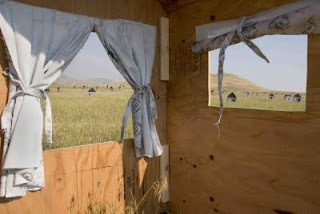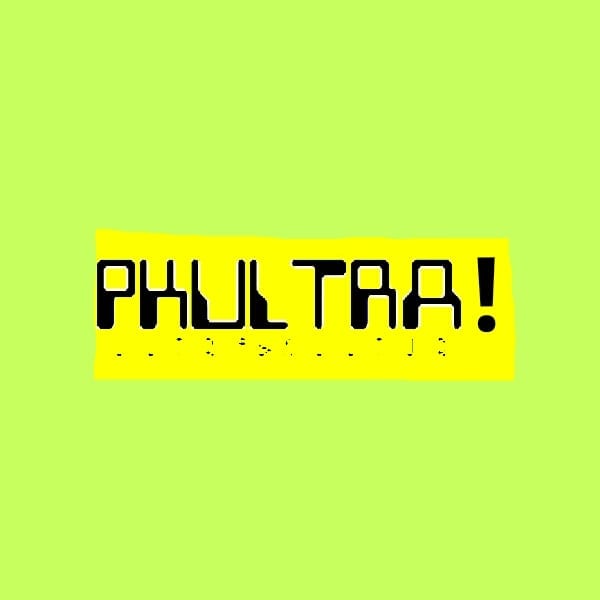
Form/Space Atelier Exhibit August 14- Sep 6, 2009
Show Title: Outskirts
Show Duration: August 14- September 6, 2009
Opening Reception August 14, 6PM as part of the Belltown 2nd Friday ArtWalk; www.belltownartwalk.com
Outskirts is a site-specific infiltration using photographs and a kiosk to narrate a previous site-specific exhibit by Paula Rebsom developed during a residency at the Ucross Foundation in a Wyoming prairie dog metropolis. Outskirts is Rebsom's first solo show at Form/Space Atelier and her second show at Form/Space Atelier overall. Portland-based Rebsom is the recipient of the Jan Zach Award for excellence in sculpture and the AAA Dean's Fellowship Award from the University of Oregon, where she received her MFA.
Eric Kellogg II comments on Paula Rebsom:
My favorite show in Portland this year (2006) was Paula Rebsom at the Tilt Gallery. Her work is amazing. She brings a whole new flair to photography. Her photographs were of massive wood structures, cut out in the shape of wolves. Honestly, you have to see the work. It reminds me of Bev Doolittle—when I was younger, I would spend hours gazing at my mother's Doolittle collection. When I saw Rebsom's work I had to keep coming back, sometimes twice a day. In my opinion, Paula Rebsom is the Bev Doolittle of the contemporary photography world.
Jeff Jahn comments on Paula Rebsom:
Probably the best local show up is "When I can't be here, I go there" at Tilt gallery (run by PORT's own Jenene Nagy, I just can't ignore this gem, which comes on the heels of several other decent to good shows). In addition, "WICBTIGT" is the auspicious debut of recent University of Oregon MFA grad Paula Rebsom who seems to have become ten times the artist she was 6 months ago. With just two large format images Rebsom constructs impressive somewhat pensive scenes of moody artifice but it's the little touches that win the day here, including the conceptual installation.
What I like here is that unlike Gregory Crewdson and to a lesser extent Thomas Demand, Rebsom's scenes are studies in revealed staging and rather spoiled artifice.
It is a nice installation as the two photos (one is a front yard, the other is of the back yard) seem to long for one another's phoniness… its like Breakfast at Tiffanies only with Joan Crawford as Holly and Mickey Rooney cast as Paul "Fred" Varjak not the intolerable landlord. That effect would be icky but you would have to watch that trainwreck.
Back to the photos, the house itself seems to be a non-entity, a prop for the props which sets up some nice rythms for the rest of the show. Also, like Ad Reinhardt paintings they need to be seen in person as tiny internet images can't possibly provide enough detail or contrast to represent them well. It is a nice touch of phoniness that demands there be no subsitutes.
The front yard photo, "North Dakota Badlands," sports a tiny dandelion in the extreme foreground, which highlights the simple and artificial cutout steppes in front of the ranch house and in "Howling Coyote" we can practically hear the yelping of a film foley that will never be added to this acknowledged contrivance. It's all chicanery and there is something refreshingly honest about the gloom here. Apparently all of it was accomplished with existing lighting, yet it hardly feels like an indie filmmaker's work and more like a darker and still cousin to Terry Gilliam's strange film, The Adventures of Baron Von Munchausen.
In the crowded genre of cinematic and staged large format photography Rebsom has come right out of school with something to say of her own. It isnt behind the scenes but its rather refreshing that she doesnt try to delight her audience so much as not make any promises that her work can't keep. For me it delivered more. By Jeff Jahn, October 11, 2006.
Paula Rebsom comments on her work:
Outskirts
I could hear the prairie dogs barking miles before I arrived in their desolate town 5 miles down a dirt road from Ucross, Wyoming, population 25. As I got out of my vehicle to survey the location for a new suburban development, a family of pronghorn circled me curiously and marked their territory along the way. The road I walked along was littered with bullet casings. The prairie dogs continued to bark as they scattered to their burrows for safety. As they disappeared into their extensive network of underground tunnels a ghostly stillness settled over the town. All that remained were a few bleached prairie dog skulls and scat that I found lying next to their burrows.
All this was very familiar to me having grown up in western North Dakota. As a young girl I thought prairie dogs were cute animals you fed crackers to, as a teenager I shot them for sport (an act I am not proud of), and as a young adult I educated people on the importance of prairie dogs in the ecosystem as a ranger for Theodore Roosevelt National Park. Although prairie dogs are small and seemingly harmless animals they are quite controversial. Farmers and ranchers see them as competition for acreage and their burrows as a danger to livestock. Ecologists consider them a keystone species playing a central role in the survival of many endangered species that prey on them or use their burrows for nesting.
This new suburban development I scouted on the 22,000-acre ranch that houses the Ucross Foundation was not for humans, but rather for the prairie dogs themselves. I constructed 85 small house facades, each with its own set of pleated curtains, to be placed in a very active portion of a prairie dog town. Over the course of three days, I staked one house behind each existing burrow, creating a visual map of the prairie dog town. For the remainder of my stay I spent the mornings and early afternoons (when prairie dogs are most active) observing their interactions with this new development. Instead of embracing this new suburban utopia, the prairie dogs abandoned the heart of the town. Only the young, naive ones remained in the homes on the outskirts.
The installation in the prairie dog town on the Ucross ranch combined elements of urban sprawl, homesteads, and ghost towns. My role fluctuates between that of a rancher, a deputy, and a park ranger, leaving room for an ambiguous narrative to form within the sequence of images. In the Outskirts project I explored my own personal relationship with these animals and also created a domestic paradox of human and animal relationships that balances on the edge of absurdity. The images act as historical documents, offering a different perspective in the complex relationships that we have developed with animals and nature.








